9 secrets professional cleaners swear by for fresh-smelling bathrooms
Keep your bathroom smelling fresh year-round with these expert-approved cleaning tips and tricks
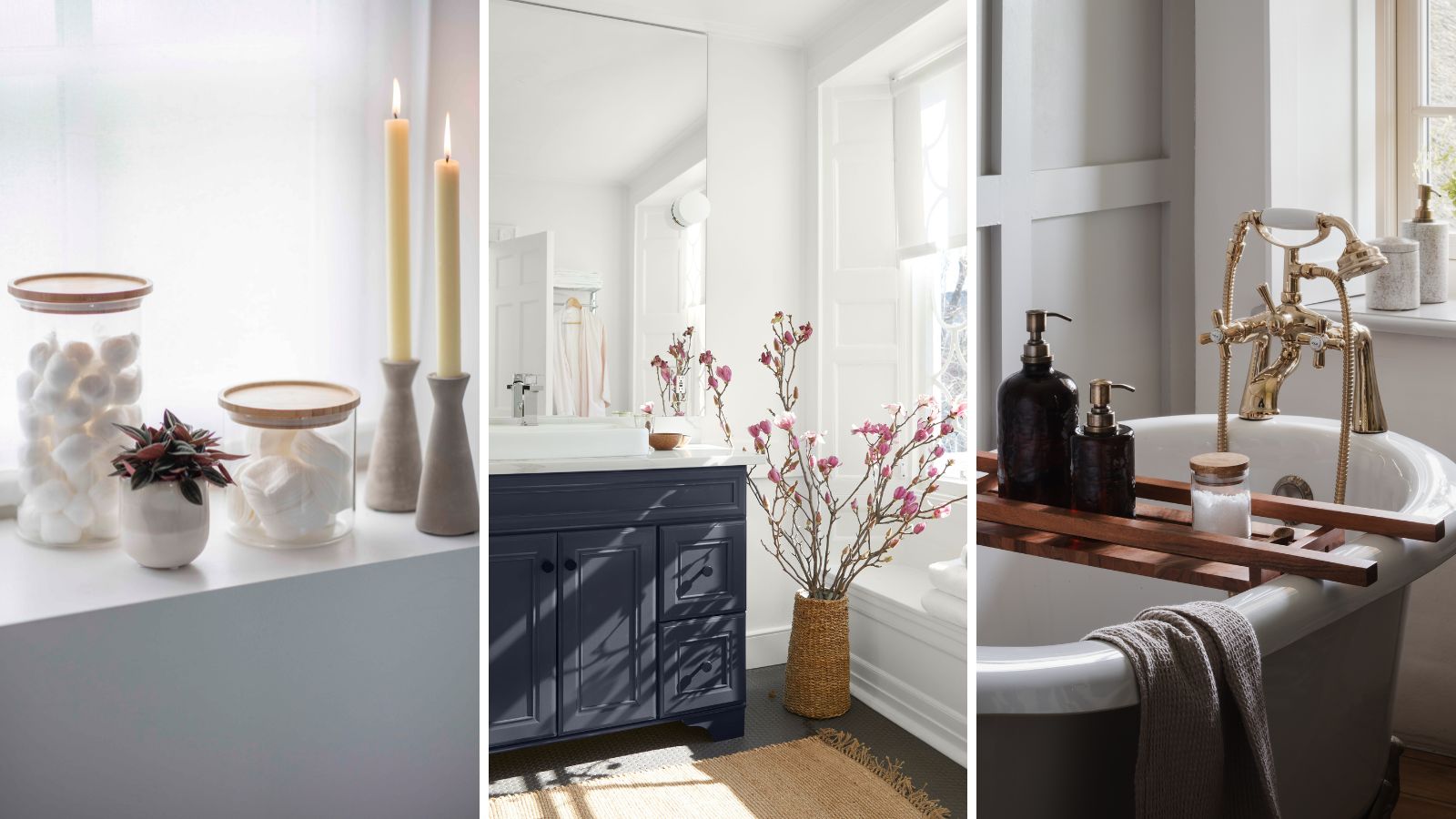

Keeping your bathroom smelling fresh can be challenging, especially in busy households. From lingering moisture to hidden grime, maintaining a pleasant aroma takes more than just the occasional spritz of your favorite air freshener.
Fortunately, professional cleaners have a few secrets for a fresh-smelling bathroom year-round. In this guide, we’ll reveal their expert tips for a beautifully-scented space, covering everything from essential tools of the trade to the steps you need to take before, during, and after the cleaning process.
So, if you’re wondering how to clean a bathroom to make your home smell nice, we’ve gathered the best tips to keep your space smelling delightful long after cleaning day...
Rules for fresh-smelling bathrooms
According to the professionals, the key to a fresh-smelling bathroom is simple: keep it clean. Rhonda Wilson, Quality Lead Cleaner at FreshSpace Cleaning, explains, 'Honestly, I think it’s all about building a habit. Start with simple daily cleaning tasks like wiping down surfaces, squeegeeing the shower, and emptying the trash when it’s needed. Then, once a week, clean the shower or tub, wash your towels and bath mats, sweep or dust, and scrub the toilet.'
For that extra-fresh aroma, though, you'll need to stock up on some essential cleaning supplies and learn the right way to use them in your bathroom.

Rhonda has been a professional cleaner for over 20 years and her cleaning tips and tricks have been featured in various articles. She currently works as Quality Lead Cleaner at FreshSpace Cleaning.
Essential Cleaning Supplies
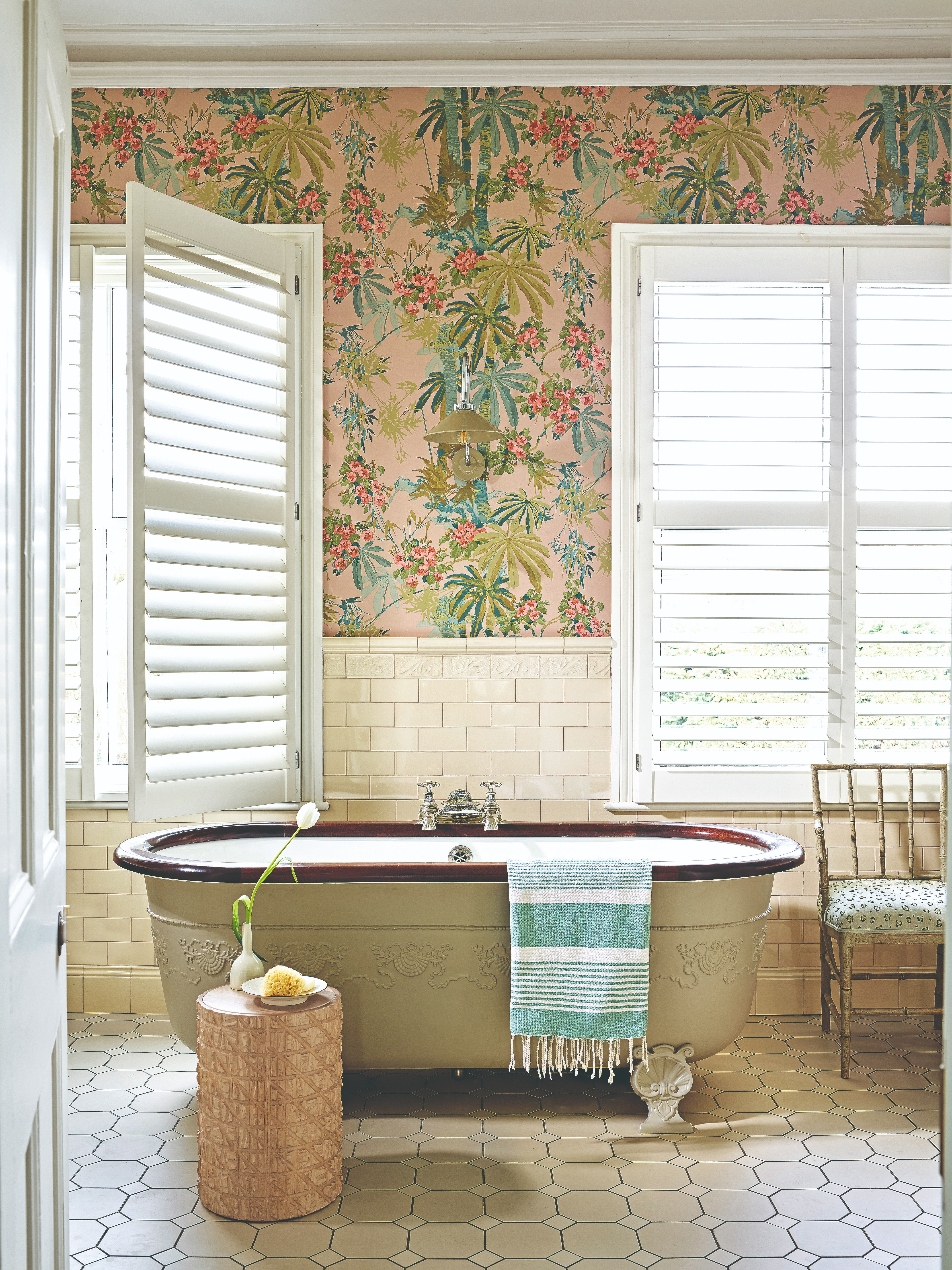
Having the right products and tools to hand will make all the difference when it comes to keeping your bathroom fresh. Here’s what professional cleaners recommend:
- An All-Purpose Bathroom Cleaner / Spray: Look for products that contain lavender, eucalyptus or tea tree oils. These are natural disinfectants and they smell great, too.
- Baking Soda: This versatile odor absorber is perfect for neutralizing smells when placed in open containers around the bathroom.
- White Vinegar: Effective for breaking down mineral deposits and cutting through grime in showers and sinks, white vinegar also helps to deodorize drains.
- Toilet Bowl Cleaner: Products like Clorox or Lysol Power Toilet Bowl Cleaner from Amazon break down stains and eliminate odors, keeping your toilet smelling fresh. For similar results, you can also purchase a pack of 4 Clorox tablets from Amazon.
- A Grout Brush or Old Toothbrush: These tools are ideal for scrubbing grout lines and other hidden spots prone to mildew buildup.
- Activated Charcoal Bags: These natural deodorizers absorb moisture and trap odors, making them great for combating damp spots.
Optional Supplies
- Essential Oils: A few drops of your favorite essential oils, like lemon, peppermint, or tea tree, can be added to cotton balls or used in a diffuser to keep your bathroom smelling fresh.
- Reed Diffusers: These offer a long-lasting and subtle fragrance – ideal for maintaining a pleasant aroma in the bathroom. You can find out more about how we test reed diffusers in our dedicated guide.
- Scented Candles: Opt for candles made with natural soy wax and essential oils for a clean burn and a soothing scent.
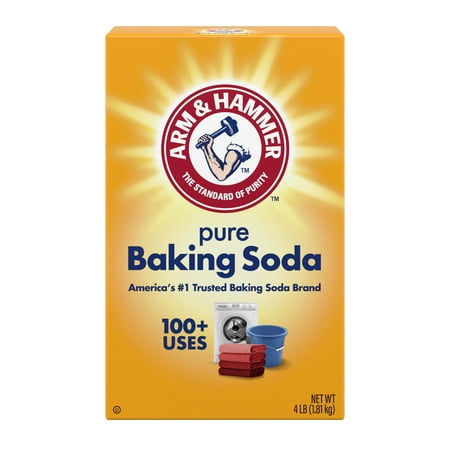
This popular brand of baking soda is a tried-and-true cleaning staple, known not just for its scrubbing power but also for its ability to absorb unwanted odors.

We love the plant-based, biodegradable formula of this Method shower cleaner. You can simply spray and walk away, leaving your bathroom smelling minty-fresh.
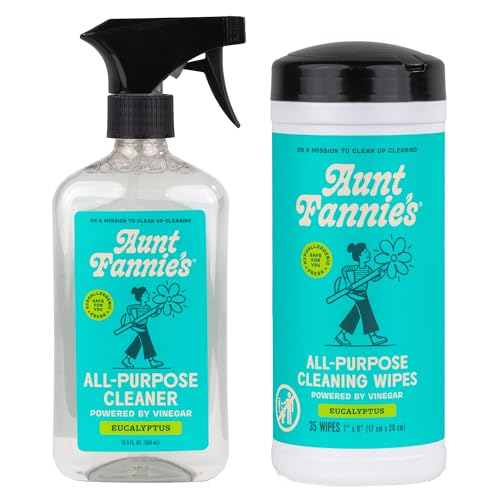
Cleaning with vinegar is a great way to remove bad odors from your bathroom, thanks to its natural deodorizing properties. This Aunt Fannie's Bundle is well-reviewed and features a fresh eucalyptus scent.
Actions To Take Before Cleaning
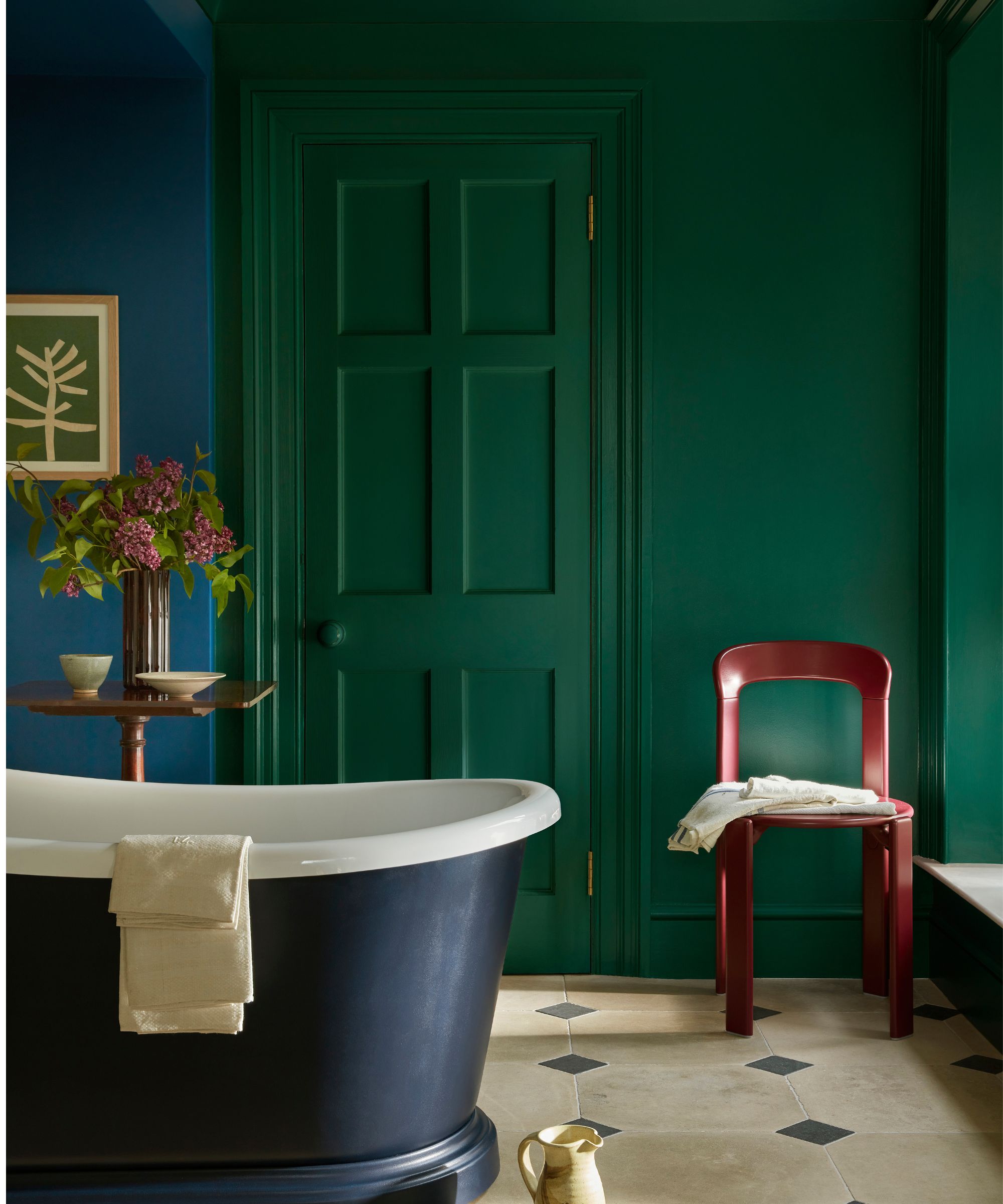
If you want to keep your bathroom smelling fresh, preparation is key. These simple steps before you dive into your cleaning routine can make all the difference, setting the stage for a more effective cleaning and helping to banish stubborn odors.
Declutter First
According to professional cleaner, Rhonda Wilson, the first step toward a fresher-smelling space is to declutter your bathroom.
'If you’ve got old loofahs or bath sponges that are just collecting dust (and bacteria), it’s time to toss them. These items can be mold magnets if they’re worn out or not used often,' she explains. 'Shower curtains are another thing people tend to overlook. If you’re not washing it regularly, it can get pretty gross with mold and mildew buildup. Just throw it in the washer with some old towels, add a cup of white vinegar, and a bit of detergent, and you’re good to go. Hang it back up to dry, and it’ll smell a whole lot better.'
Rhonda also points out another commonly overlooked item – flower pots and vases. 'If you’ve got them in your bathroom, be mindful of the water in them. Stagnant water can start to smell and even attract mosquitoes. To avoid the hassle, clean them every now and then or switch to a self-watering system to make it easier on yourself.'
Ventilate The Bathroom
'Since bathrooms are enclosed spaces where we shower, and relieve ourselves, it's important to allow for airflow,' reminds Steven LP, owner of Cleanzen Boston Cleaning Services. 'Proper bathroom ventilation is a must if you want to keep your space smelling fresh.'
Excess moisture is a leading cause of musty odors and mold, so if your bathroom has a window, crack it open during and after showers to let fresh air in and allow moist air to escape. This simple habit can significantly reduce humidity levels, preventing lingering damp smells. It's also a good idea to keep the bathroom door open after a shower to allow fresh air to circulate from adjacent rooms.
In bathrooms without a window, Steve LP recommends running the exhaust fan for 15-20 minutes after showering to help remove excess moisture from the air. For an added boost, consider using a portable dehumidifier to keep humidity in check, especially in bathrooms prone to dampness.

Steven is the founder of Cleanzen, a highly-rated home cleaning service in Miami. Under Steven’s leadership, Cleanzen has become the go-to choice for deep cleaning, move-in/move-out services.
Actions to Take During Cleaning

Benjamin Moore Calm OC 22 Evening Sky
Once you’ve prepared your space for a thorough clean, it’s time to get down to the details.
Scrub Grout and Hidden Spots
Mildew and mold often hide in grout lines, behind toilets, and around drains, making these key spots to target during a bathroom deep clean. Make sure you don't forget these areas:
- The toilet tank
- Underneath the toilet seat
- Beneath the sink or tub (if applicable)
- Walls (especially the lower parts)
- Tiles and grout
Use an old toothbrush dipped in a mixture of baking soda and water to reach tight areas, or invest in specialist tools, like this pack of 6 grout brushes from Amazon, for deeper scrubbing. Pay special attention to the areas around faucets and handles, where moisture can accumulate.
Clean Faucets and Shower Heads
Another odor-prone spot that often goes overlooked is faucets and shower heads. Larry Snider, VP of operations at Casago, explains, 'Even those who stay on top of cleaning their bathrooms regularly sometimes forget to clean faucets and shower heads. Mineral buildup can cause musty smells, especially in areas with hard water.'
To tackle this, Larry suggests removing your shower head and soaking it in a mixture of white vinegar and water for an hour. This helps dissolve mineral deposits, leaving your shower head clean and odor-free. For faucets, he recommends a cloth soaked in vinegar to help remove buildup around the base, leaving your fixtures sparkling.
Use Baking Soda in Drains
Bathroom drains can be a source of lingering odors, but there’s an easy fix. Pour a mix of baking soda and vinegar down the drain, followed by hot water. It will help break down buildup and keep plumbing free from nasty smells.
For an extra boost, try adding a few drops of essential oil to the baking soda before pouring it down the drain. This combination not only cleans but leaves behind a fresh, subtle scent that can make a big difference to the overall aroma of your space.
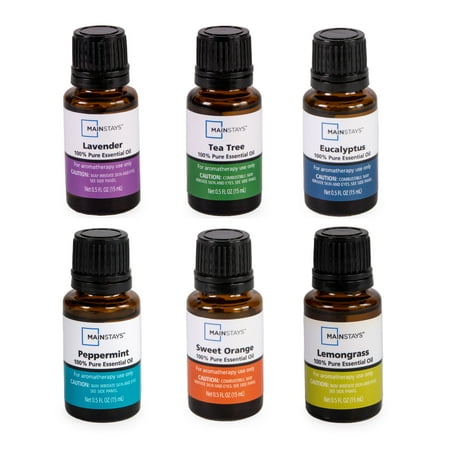
A few drops of essential oil can enhance the odor-eliminating power of your baking soda. This pack from Walmart contains 6 fresh scents, including lemongrass and peppermint,
Steps to Take After Cleaning
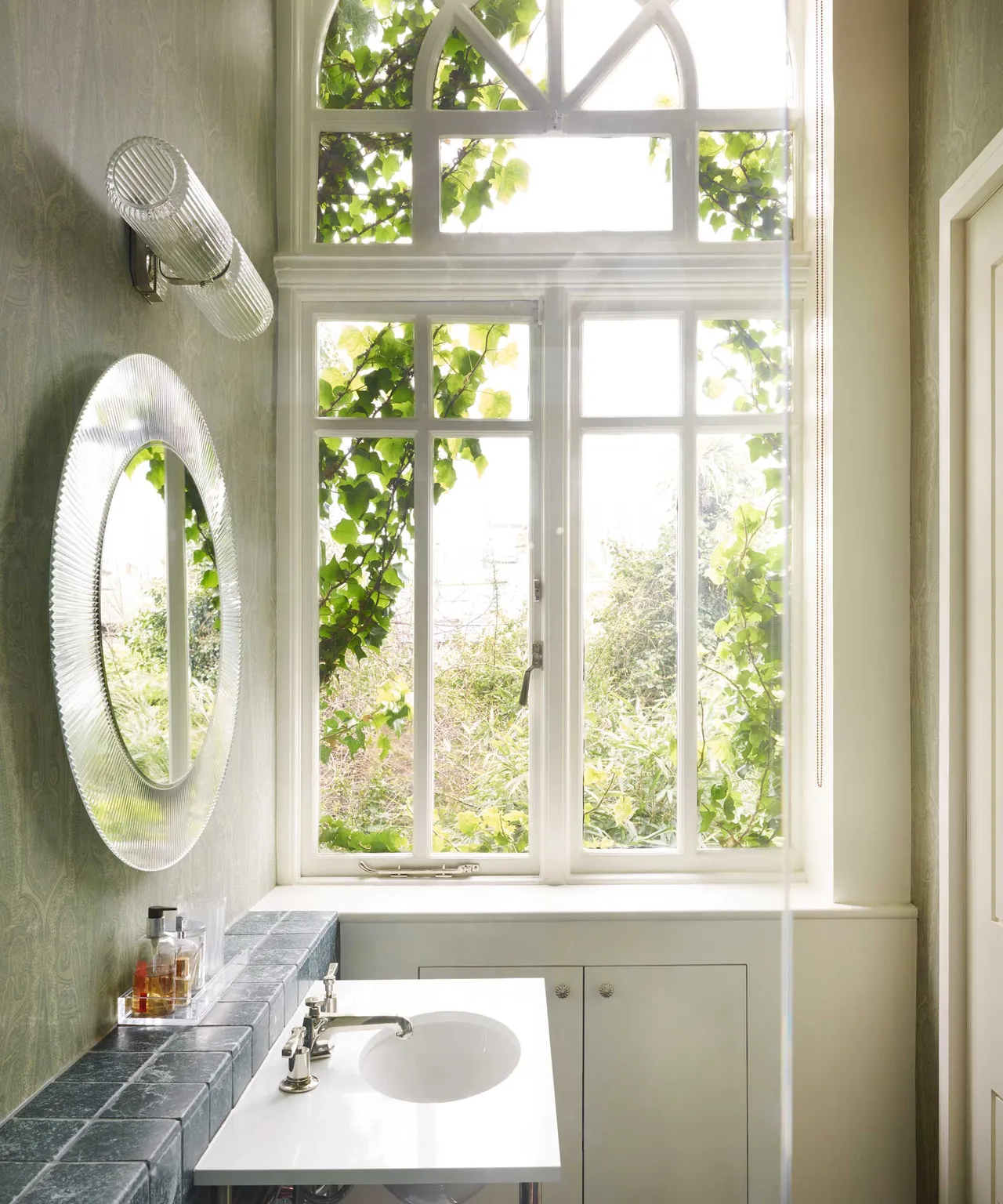
Keeping your bathroom fresh doesn’t end with 'cleaning day'. The following habits will help you maintain that just-cleaned scent for longer.
Keep Everything Dry
When it comes to bad smells, Rhonda Wilson maintains that moisture is the enemy. 'Soap scum, wet shower walls, and floors can lead to some nasty odors if not taken care of,' she explains. 'So, after showering, use a squeegee for the walls and doors and a mop for the floor. Keeping everything dry goes a long way. The drain should also be clear so water isn’t pooling.'.
Make sure to wash your towels regularly and hang them to dry between uses. The same goes for washing bath mats, as leaving them bunched up is just asking for that musty smell to set in.
Check for problem areas
Nice-smelling bathrooms require regular maintenance. This means checking for potential problem areas, like leaks or persistent damp spots, that could contribute to bad odors.
Steven LP from Cleanzen explains, 'If you notice a persistent musty odor after all the cleaning, it could be coming from sink or shower pipes, where clogs of hair or other debris may be causing the smell. Mold is another culprit, so be sure to check walls and ceilings. If needed, don’t hesitate to call a professional for help.'
Use Odor-Absorbing Products
If you want your bathroom to stay smelling fresh, continue to use odor-absorbing products after you've cleaned. Unlike air fresheners that temporarily mask unpleasant smells, these products will target the source, absorbing odors and leaving the space smelling cleaner. This is what the professionals recommend:
Place an open container of baking soda in hidden spots like behind the toilet or under the sink, and replace it every 30 days.
Activated Charcoal
You can purchase activated charcoal pouches at Amazon that effectively trap odors and moisture. Place a bag under the sink, behind the toilet, or in any damp corner of your bathroom. Charcoal bags typically last for up to two years – just set them in the sun every few months to refresh their absorbency.
Essential Oils
While it’s tempting to fill your bathroom with the strongest-smelling air fresheners, less is often more. Logan Taylor from Dazzle Cleaning Company, recommends a more subtle approach, 'Add a few drops of essential oil to a cotton ball and place it in discreet areas, like behind the toilet, bathroom trash can, or inside a cabinet. It’s a simple way to keep a subtle, fresh scent in the air without overwhelming the space.'

Logan Taylor is the founder and owner of The Dazzle Cleaning Company celebrated as 'The Gayest Cleaning Company in America'. Founded in 2014, Dazzle has expanded from a single-client operation into a thriving business with multiple locations, known for its vibrant and inclusive approach to cleaning services.
Introduce your favorite scents
Once your bathroom is clean and dry, it’s time to add those final touches that make the space feel and smell inviting. Consider using a reed diffuser featuring one of your favorite scents, like citrus or pine, which can lend a spa-like quality to your space. Reed diffusers are a great choice for a continuous, subtle fragrance that doesn’t require much upkeep – just flip the reeds occasionally to refresh the scent.
Naturally scented candles are another excellent option for adding a subtle aroma to your bathroom. Choose soy-based candles with essential oils for a clean burn and a fragrance that’s gentle but effective.
Remember, though, not to rely solely on these fragrance-boosters. A fresh-smelling bathroom starts with a clean foundation.
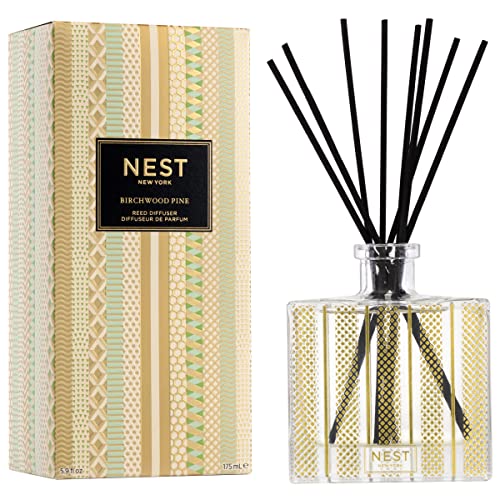
This hugely popular and richly-scented reed diffusor smells like a blend of white pine, fir balsam, and birchwood.
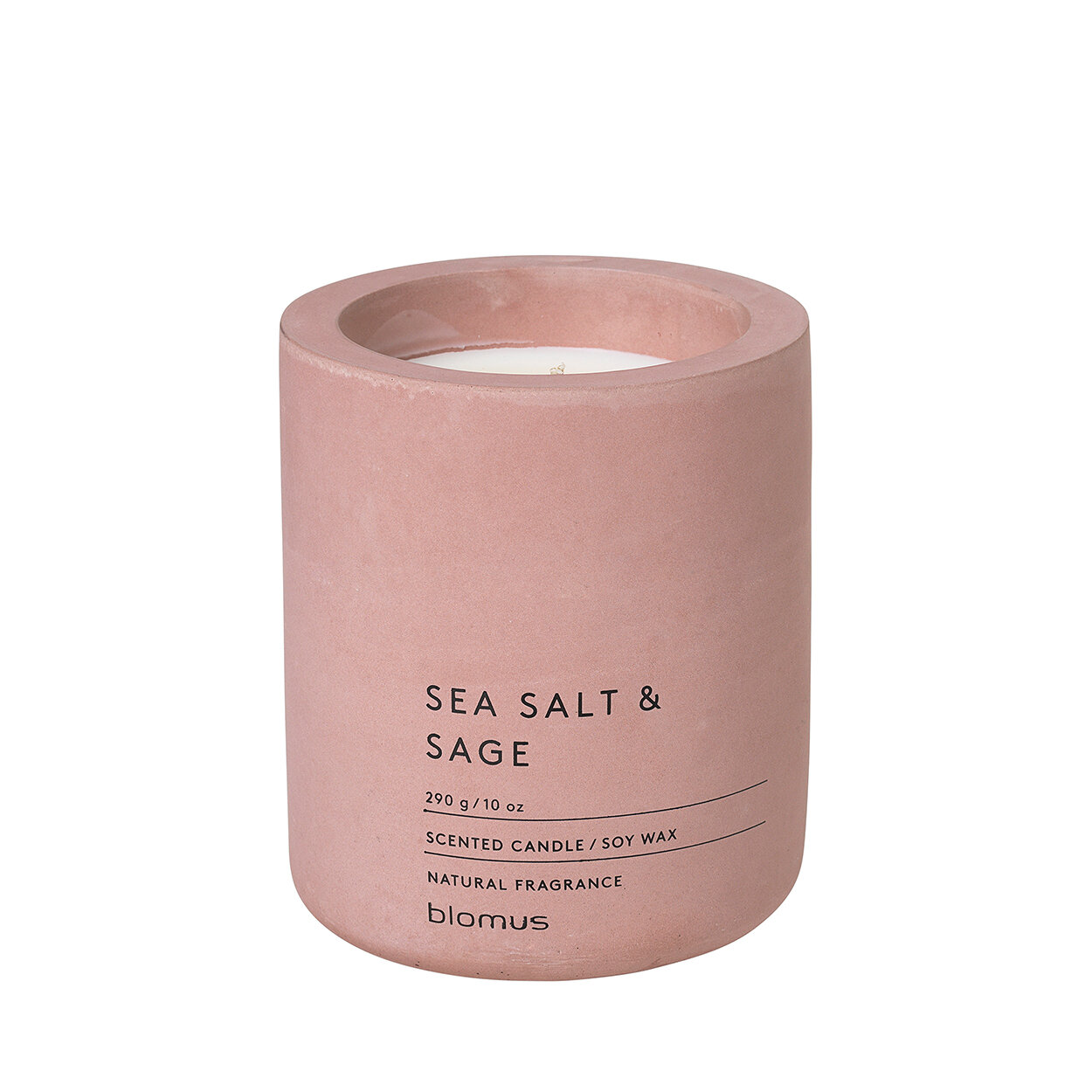
This soy candle offers a clean, toxin-free burn and a wonderfully subtle aroma of sea salt and sage. Plus, the sleek concrete container would complement all manner of bathroom schemes.
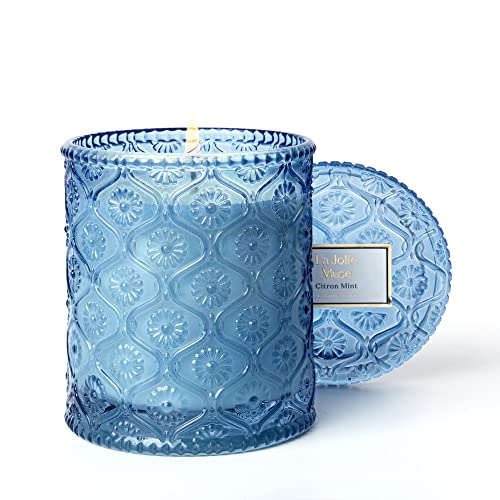
Not only is this natural soy candle rather pretty, but the fresh citrus aroma it releases when lit will make your bathroom smell delightful.
FAQs
How often should you deep clean a bathroom to keep it smelling fresh?
Aim to deep clean your bathroom at least once a week. Focus on high-moisture areas like the shower, sink, and toilet, where grime and mildew tend to accumulate. A thorough clean, paired with daily maintenance like drying surfaces and clearing drains, will help keep bad smells at bay.
What can you use if you don’t have a bathroom exhaust fan?
If your bathroom doesn't have an exhaust fan, you can use a portable dehumidifier or a clip-on fan, like this one from Amazon to keep air circulating. Leaving the bathroom door open after showers and cracking a window can also help reduce moisture levels and keep your bathroom smelling fresh.
What is the biggest mistake people make when attempting to make a bathroom smell nice?
According to Logan Taylor, owner of Dazzle Cleaning Company, 'One of the biggest mistakes people make is using harsh chemical cleaners that can actually cause more harm than good. These cleaners not only leave behind strong unpleasant odors, but they also strip away the natural bacteria that help keep surfaces clean and fresh.'
'You should also avoid using too many different scents in the bathroom as it can create an overwhelming and unpleasant mix of smells,' he cautions.
How can you stop a trashcan from smelling?
If you want to mask bad trashcan smells, empty the trashcan regularly, especially if it holds damp items like used tissues or wipes, and consider using a lidded trash can to help contain odors.
'Another easy trick is to add a couple of drops of your favorite essential oil to a cotton ball and pop it in the bottom of your clean, empty trash can,' advises Rhona Wilson, quality lead cleaner at FreshSpace Cleaning. 'You can also stick it to the side or lid to subtly keep things smelling good.'
Adding greenery can also help keep your space smelling fresh; consider incorporating plants that make a bathroom smell nice, such as lavender, eucalyptus, or mint.
Sign up to the Homes & Gardens newsletter
Design expertise in your inbox – from inspiring decorating ideas and beautiful celebrity homes to practical gardening advice and shopping round-ups.

Gabriella is a freelance contributor for Homes & Gardens. She is a DIY enthusiast and a lover of all things interior design, often found antiquing or browsing the aisles of her local hardware store. She has a particular passion for historic buildings and is in the process of renovating a Victorian coachhouse in the countryside.
For much of the past decade, Gabriella has worked as a freelance writer, crafting copy for national publications and renowned homeware brands. Most recently, she worked for Homebuilding & Renovating Magazine and is the former Head of Solved at Homes & Gardens, focusing on case studies for the magazine and website, as well as writing features about issues surrounding historic and listed building projects.
-
 In season - 5 gorgeous daffodil arranging ideas you need to try for spring
In season - 5 gorgeous daffodil arranging ideas you need to try for springFrom rustic to elegant, you need to try these daffodil arranging ideas, which are a cheerful and creative way of bringing the outdoors in this spring
By Katrina Harper-Lewis
-
 My grandma's 'chimney effect' bedroom cooling trick brought goose-pimple inducing relief to help me sleep on the hottest nights in Iran
My grandma's 'chimney effect' bedroom cooling trick brought goose-pimple inducing relief to help me sleep on the hottest nights in IranUse air pressure and temperature differentials to your benefit and beat the heat
By Punteha van Terheyden
-
 Engineers reveal the 4 common faults they're always fixing in Shark vacuums – and how you can prevent them from happening
Engineers reveal the 4 common faults they're always fixing in Shark vacuums – and how you can prevent them from happeningThese checks will restore your Shark vacuum to its former glory
By Dan Fauzi
-
 5 things professional cleaners always do to overcome a cleaning roadblock – they're surefire ways to feel 'motivated and clear-headed' experts say
5 things professional cleaners always do to overcome a cleaning roadblock – they're surefire ways to feel 'motivated and clear-headed' experts sayGet your cleaning schedule back on track
By Ottilie Blackhall
-
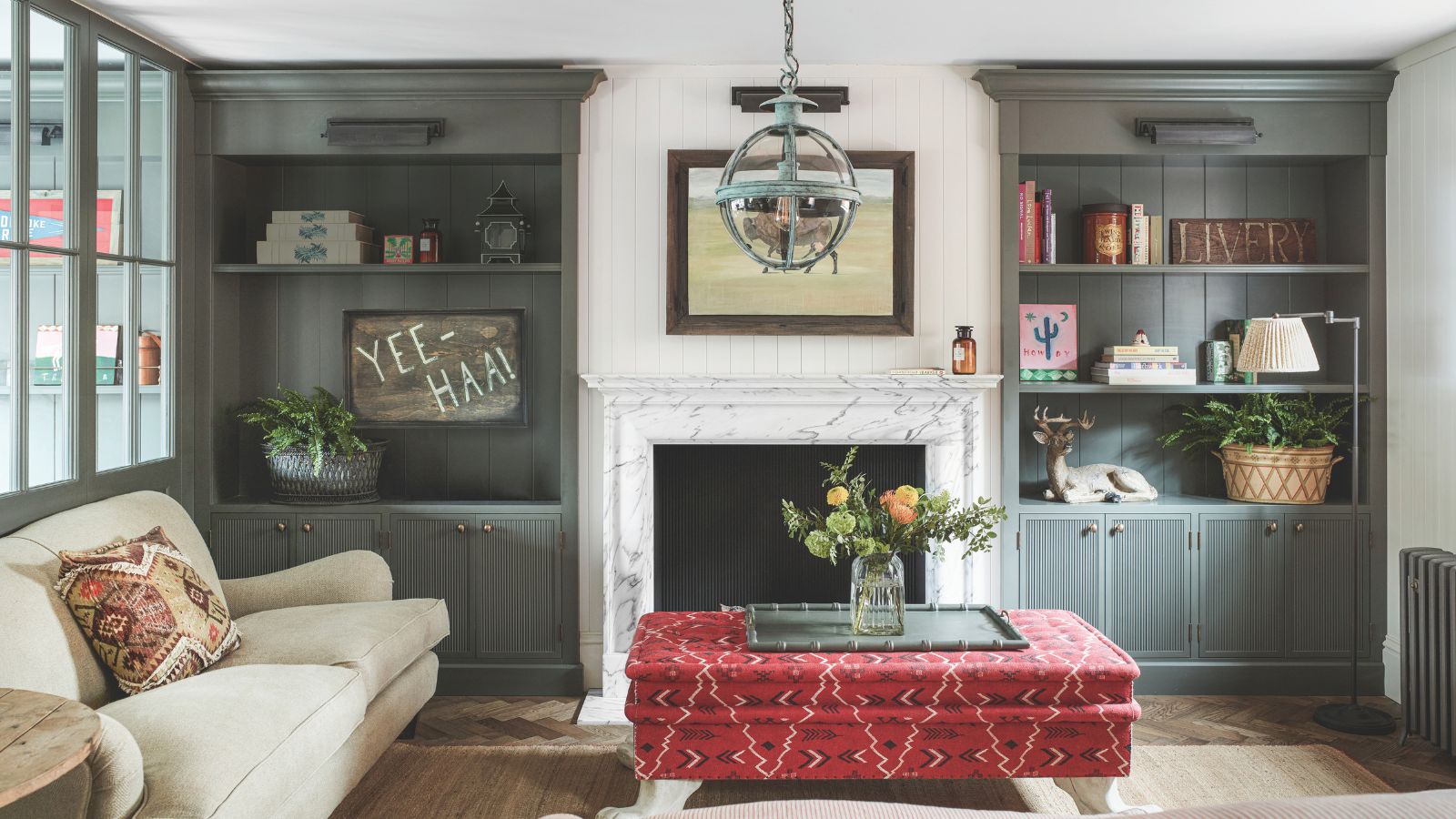 Dyson V15 Detect vs Dyson V12 Detect Slim – which is right for your home?
Dyson V15 Detect vs Dyson V12 Detect Slim – which is right for your home?I've spent more than 200 hours testing vacuum cleaners and these two cordless Dysons are my personal favorites
By Dan Fauzi
-
 I've spent over 200 hours testing vacuums and swear by my two Dysons – this is how I properly clean a Dyson vacuum filter for longer-lasting appliances
I've spent over 200 hours testing vacuums and swear by my two Dysons – this is how I properly clean a Dyson vacuum filter for longer-lasting appliancesYour Dyson vacuum will last much longer and clean at its best
By Dan Fauzi
-
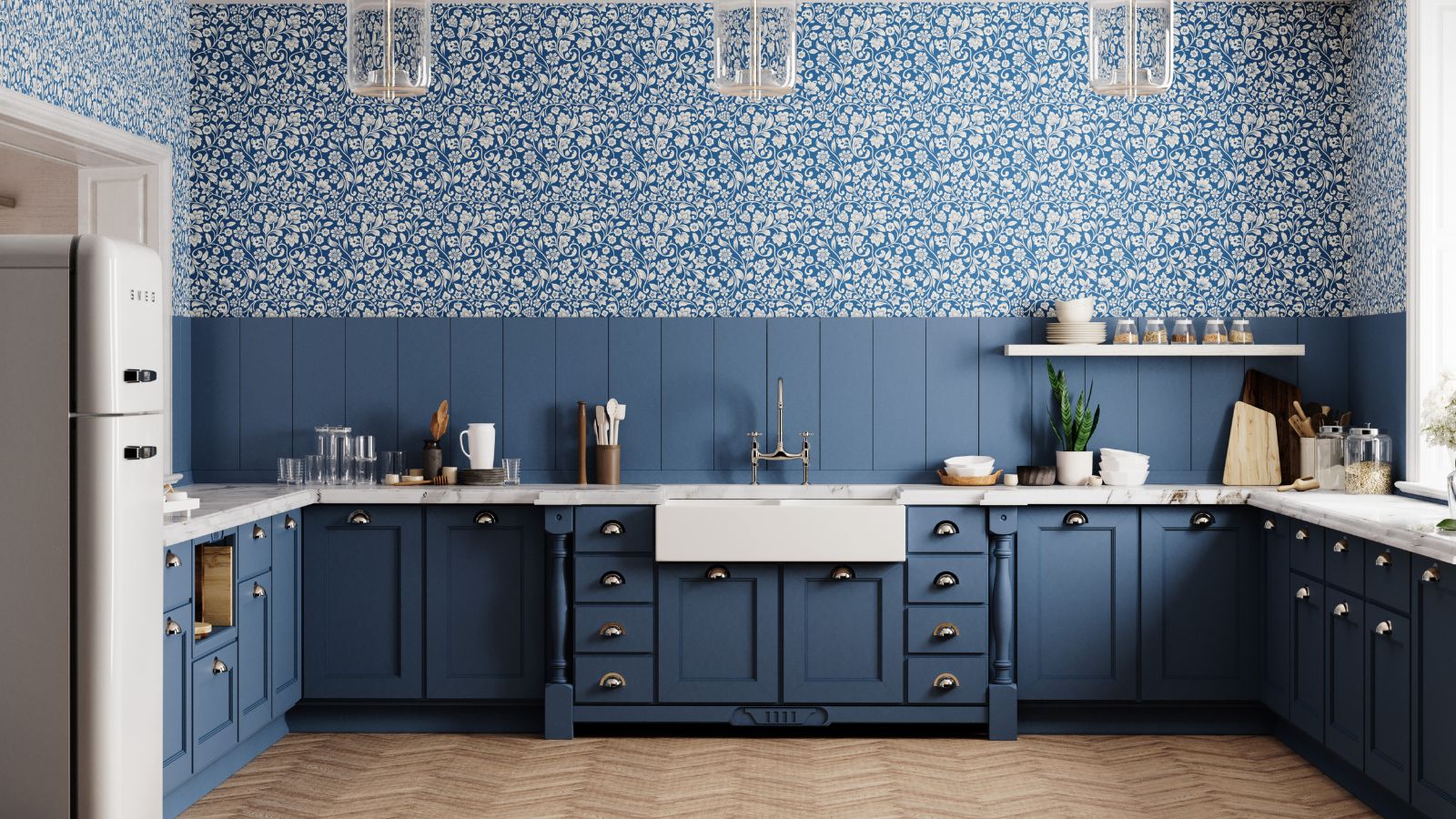 Do cleaning products expire? Professional cleaners warn time could make them ‘less effective, and in some cases, irritating to use’
Do cleaning products expire? Professional cleaners warn time could make them ‘less effective, and in some cases, irritating to use’For the best results, it pays to stay on top of the timeline of your cleaning products
By Chiana Dickson
-
 How to clean a patio – 6 different methods, and when you must use a chemical cleaning agent
How to clean a patio – 6 different methods, and when you must use a chemical cleaning agentFrom manual scrubbing, natural solutions or calling in the pros, industry experts reveal the benefits and considerations of each method
By Andy van Terheyden
-
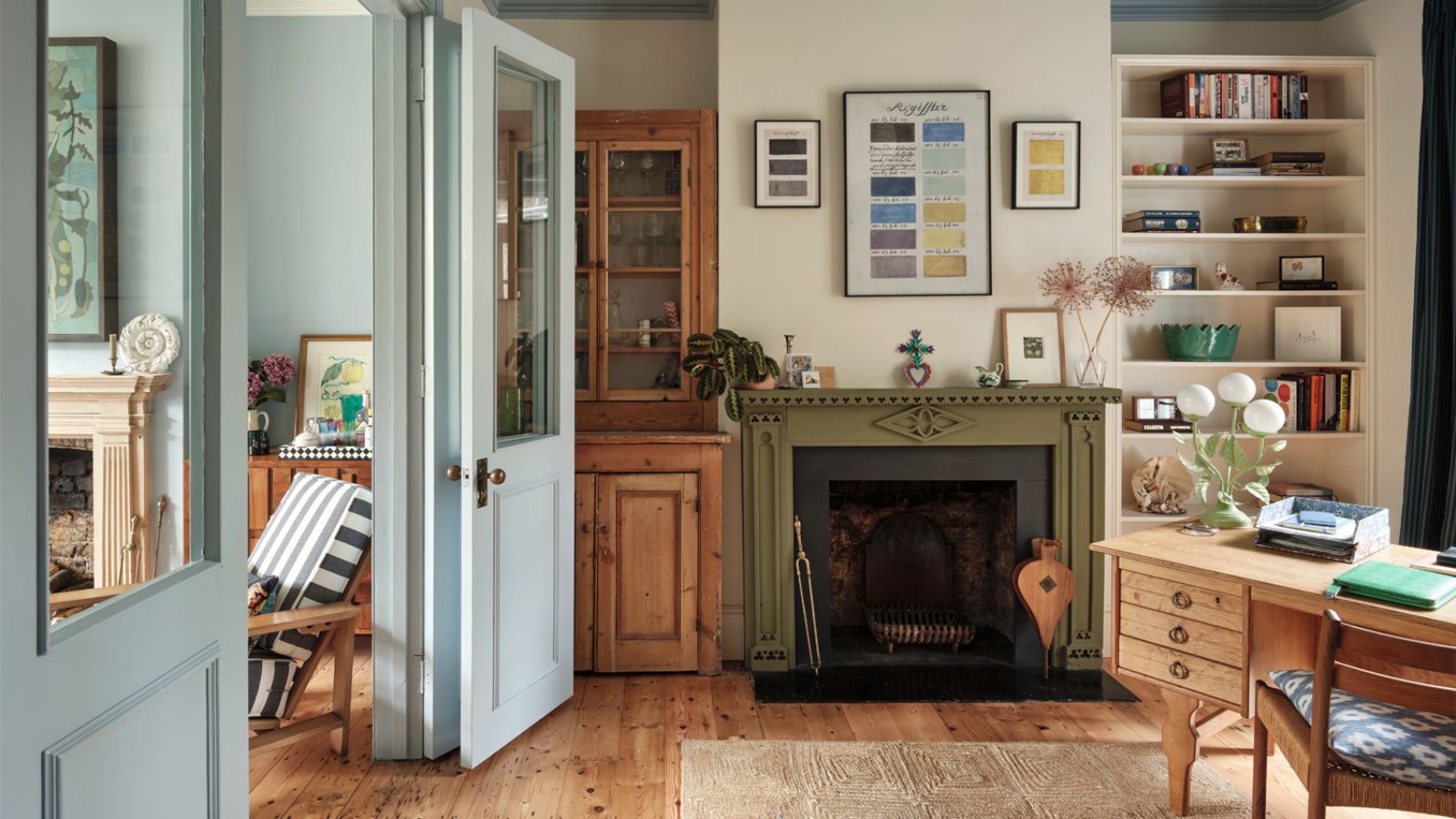 5 surprising but brilliant ways to clean with old socks – from perfectly buffing stainless steel to deterring pests naturally and more
5 surprising but brilliant ways to clean with old socks – from perfectly buffing stainless steel to deterring pests naturally and moreTackle dust in tricky corners, clean your mirrors and even banish bad odors with those rogue single socks
By Andy van Terheyden
-
 5 things people with clean upholstery always do – they're simple, quick and oh-so-effective
5 things people with clean upholstery always do – they're simple, quick and oh-so-effectiveEnsure your furnishing looks clean year-round with these expert tips
By Seraphina Di Mizzurati